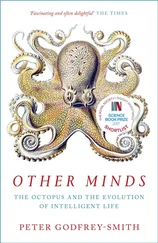1. Mixture
2. Gestation
3. Expansion
4. Age of Conflict
5. Universal Empire
6. Decay
7. Invasion
Every civilization, indeed every society, begins with a mixture of two or more cultures. Such mixture of cultures is very common; in fact, it occurs at the boundaries of all cultures to some extent. But such casual cultural mixture is of little significance unless there comes into existence in the zone of mixture a new culture, arising from the mixture but different from the constituent parts. The process is a little like the way in which a mixture of chemicals sometimes produces a new compound different from the mixing chemicals. In the case we are discussing, the new compound is a new society with a new culture. The contributing societies may be civilizations or merely producing societies (agricultural or pastoral) or merely parasitic societies (with hunting or fishing). Of the millions of cases of such cultural mixture that are occurring all the time, only rarely does there appear a new society. And even more rarely does this new society become organized in such a way that it is a producing society with an instrument of expansion. In the rare case where this occurs, we have the first stage of a new civilization. The fact that there have been no more than two dozen civilizations in almost ten thousand years of cultural mixture of producing societies will indicate how rare this occurrence is.
Since cultural mixture occurs on the borders of societies, civilizations rarely succeed one another in the same geographic area, but undergo a displacement in space. The process may be described somewhat as follows. Within a society, people have little choice as to the ways in which they will satisfy basic needs (or fulfill their potentialities). If they are hungry, they eat the food their associates eat, prepared in the fashion customarily used in their society. If they wish companionship, or a picture of their relationship to the universe or a relationship to God or security or shelter or sex or children or whatever they may wish, they obtain these desires largely in the ways and forms provided by their own society. But on the borders of societies there is a considerable mutual interpenetration of social customs, and there arise, accordingly, alternative ways of satisfying human needs. This is, obviously, particularly true where intermarriage occurs, and where decisions must be taken and choices made as to which customs will be followed. Such choices are imperative in regard to bringing up the children of mixed marriages. When this occurs far enough inside the border of a society for there to be a social majority and consensus, there is no real choice, and, if any effort is made to make a choice, the children themselves will preempt for the local consensus. But in an area of fairly equal mixture, or in an area of unequal mixture where the majority culture is declining and decreasing in prestige, a very real need to make choices arises. These choices in themselves are not very significant in forming a new culture, but two other considerations are important. In the first place, the many choices being made must be morphologically compatible in order to give rise to the necessary amount of integration to permit a body of social custom to arise. And, in the second place, a certain number of families in the same locality must make the same or similar choices. In this way a new society may arise. If this society is productive and if it becomes organized so that it has an instrument of expansion, a new civilization will be born.
As a consequence of these conditions, civilizations have generally arisen on the periphery of earlier civilizations. Canaanite, Hittite, and Minoan civilizations arose on the edges of Mesopotamian civilization. Classical civilization was born on the shores of the Aegean Sea, especially the eastern shore, on what was the periphery of Minoan civilization. Western civilization arose in western Europe, especially in France, which was a periphery of Classical civilization. And on other peripheries of Classical civilization were born Russian civilization and Islamic civilization.
If the new society born from such mixture is a civilization, it has an instrument of expansion. This means that inventions begin to be made, surplus begins to be accumulated, and this surplus begins to be used to utilize new inventions. Eventually, as a result of these actions, expansion will begin. The interval before such expansion becomes evident, but after the most obvious mixture has ceased, may cover generations of time. This period will be called the Stage of Gestation. It is Stage 2 of any civilization. In general, it is a period in which the society seems to be changing very little, and most people seem to have fairly stable status situations in the social structure. But, under the surface, much of importance is taking place and, above all, the process of investment and invention that will make possible the following period of expansion is taking place.
The Stage of Expansion is marked by four kinds of expansion: (a) increased production of goods, eventually reflected in rising standards of living; (b) increase in population of the society, generally because of a declining death rate; (c) an increase in the geographic extent of the civilization, for this is a period of exploration and colonization; and (d) an increase in knowledge. There are intimate interrelationships among these four. Increase in production is aided by expanding knowledge; the growth of population helps to increase production as well as to extend the geographic area of the society; the exploration and colonization associated with this extension of the society's geographic area is made possible by the growth of production and the growth of population, both of which permit people to be released for what are, at the beginning at least, nonproductive activities such as exploration; the same factors allow people to be released to seek knowledge of various kinds or to engage in nonmaterial activities such as artistic or philosophic activities, while the geographic expansion in itself leads to substantial increases in knowledge. This period of expansion is frequently a period of democracy, of scientific advance, and of revolutionary political change (as the various levels of society become adapted to an expanding mode of life from the more static mode of life prevalent in Stage 2). As a result of the geographic expansion of the society, it comes to be divided into two areas: the core area , which the civilization occupied at the end of Stage 2, and the peripheral area into which it expanded during Stage 3. The core area of Mesopotamian civilization was the lower valley of the Tigris and Euphrates rivers; the peripheral area was the highlands surrounding this valley and more remote areas like Iran, Syria, and Anatolia. The core area of Minoan civilization was the island of Crete; its peripheral area included the
Aegean Islands and the Balkan coast. The core area of Classical civilization was the shores of the Aegean Sea; its peripheral areas were the whole Mediterranean seacoast and ultimately Spain, North Africa, and Gaul. The core area of Western civilization covered northern Italy, most of France, the Low Countries, England, and extreme western Germany; its peripheral areas included the rest of Europe to eastern Poland, North and South America, and Australia.
When expansion begins to slow up in the core areas, as a result of the instrument of expansion becoming institutionalized, and the core area becomes increasingly static and legalistic, the peripheral areas continue to expand (by what is essentially a process of geographic circumvention) and frequently shortcut many of the developments experienced by the core area. As a result, by the latter half of Stage 3, the peripheral areas are tending to become wealthier and more powerful than the core areas. Another way of saying this is that the core area tends to pass from Stage 3 to Stage 4 earlier than do the peripheral areas . In time the instrument of expansion becomes an institution throughout the society, investment begins to decrease, and the rate of expansion (although not expansion itself) begins to decline.
Читать дальше










